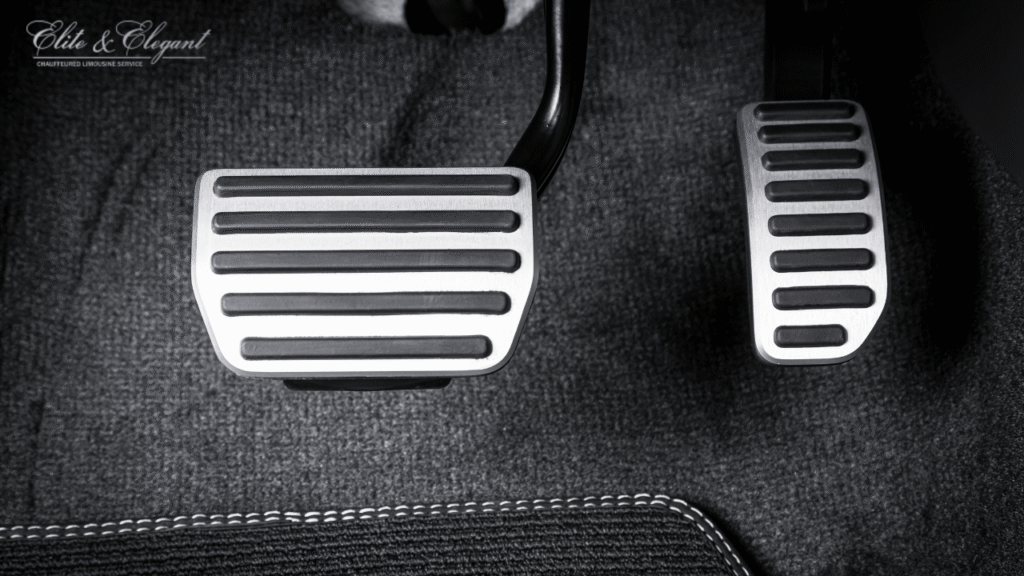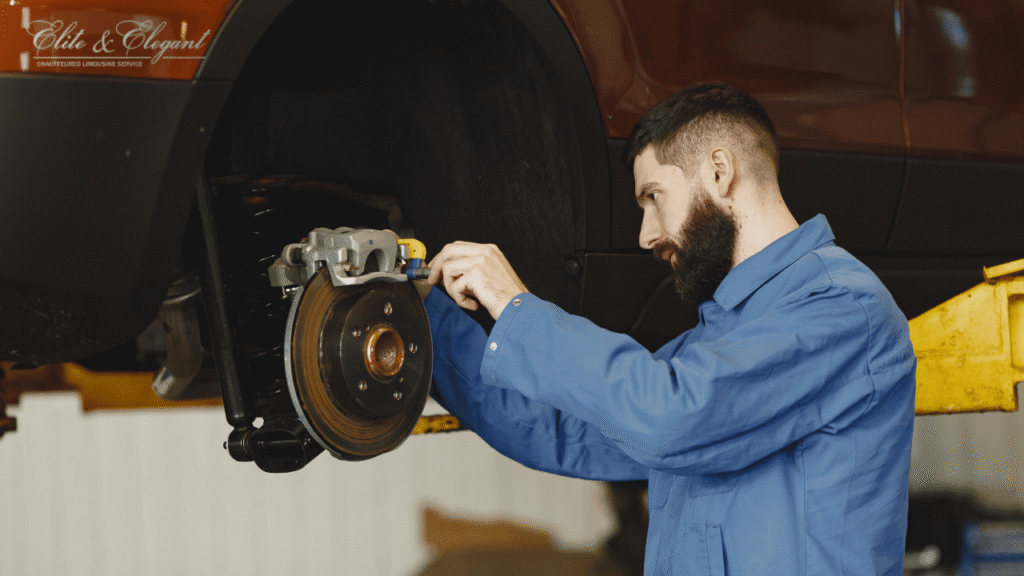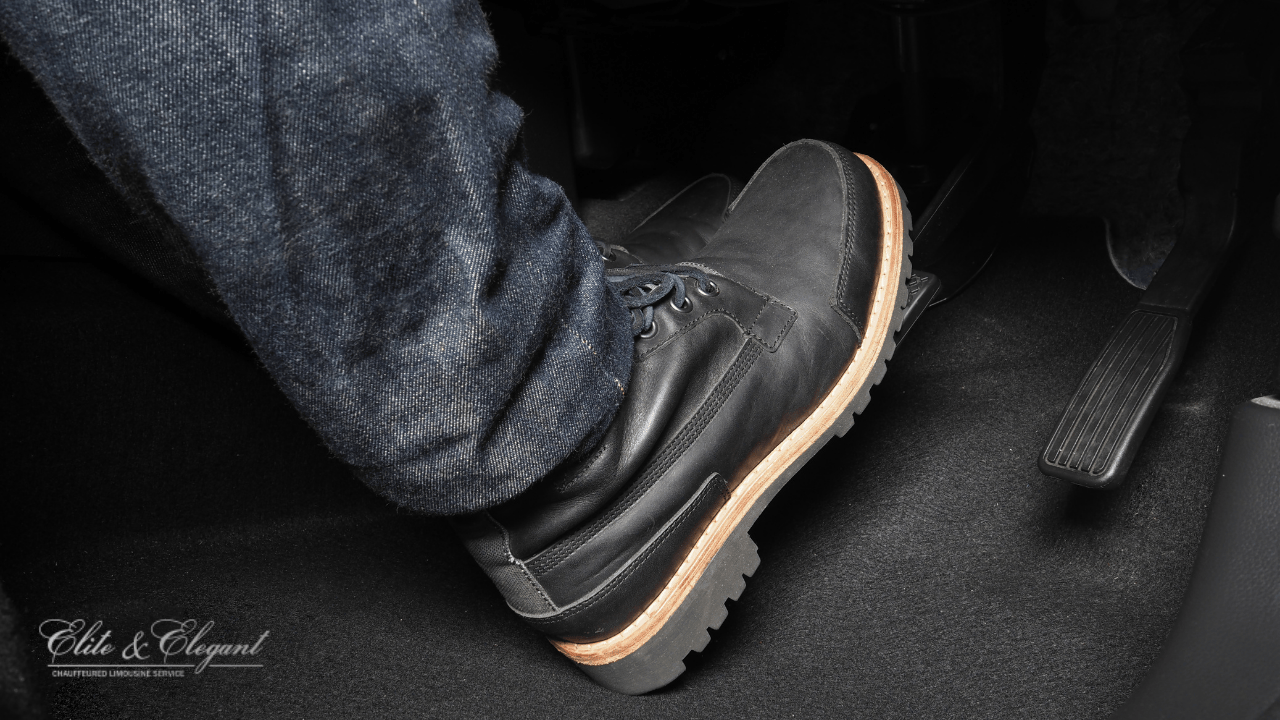Limo braking refers to the advanced braking systems in limousines, designed to handle their extended length and added weight, ensuring smooth, safe, and controlled stops for passenger comfort and vehicle stability.
Key Takeaways:
- Designed for longer, heavier vehicles
- Ensures smooth and safe stops
- Enhances passenger comfort
- Involves upgraded braking components
- Critical for luxury ride quality
Ever wondered what makes a limousine stop feel so effortlessly smooth, even with its extended body and added weight? The secret lies in a specialized system designed for precision and comfort. In this blog, we’ll answer the question: what is limo braking—and explore the advanced technology behind those seamless halts. From enhanced components to intelligent engineering, discover how limo braking systems ensure both safety and luxury on the road, making every ride as refined as the vehicle itself.
Understanding the Basics of Limo Braking Systems
A limousine’s braking system isn’t your standard setup. These extended vehicles are typically modified versions of sedans or SUVs—with longer frames and added mass—which means they need enhanced braking capabilities to handle the extra load and maintain safety.
Most modern limousines are equipped with hydraulic disc brake systems, supported by anti-lock braking systems (ABS) and sometimes electronic brakeforce distribution (EBD). These features work together to distribute stopping power evenly across the vehicle, regardless of its size or weight distribution.
Why Limo Brakes Must Go Beyond Standard Car Brakes
A standard passenger car might weigh between 3,000 to 4,000 pounds, whereas a fully loaded stretch limousine can easily exceed 7,000 pounds or more. This weight differential places greater stress on braking components. The braking system must:
- Generate more stopping force
- Dissipate more heat
- Handle longer braking distances
- Ensure passenger comfort with minimal jarring
As such, limousine braking systems often include oversized brake rotors, high-friction brake pads, ventilated discs, and reinforced calipers to provide dependable performance under heavy-duty use.
Key Components of a Limo Braking System

1. Brake Rotors
High-performance ventilated rotors are commonly used in limousines to dissipate heat more efficiently. These rotors prevent brake fade—loss of braking power due to heat buildup—which is a major concern for heavy vehicles in stop-and-go traffic.
2. Brake Pads
Limo brake pads are often made from ceramic or semi-metallic compounds that can withstand extreme temperatures and friction. These materials offer enhanced durability and quieter operation, contributing to the luxury ride experience.
3. Brake Calipers
These heavy-duty calipers exert tremendous clamping force on the brake pads, pressing them against the rotor. In many limos, multi-piston calipers are installed to improve brake responsiveness and reduce pedal travel.
4. Brake Booster
To provide a smooth and effortless brake pedal feel, a vacuum-assisted brake booster amplifies the driver’s foot pressure. This results in more precise braking control, especially when coming to a gradual stop.
5. ABS (Anti-lock Braking System)
ABS ensures that the wheels do not lock up during sudden braking, allowing the driver to maintain steering control and vehicle stability—an essential safety feature in emergency situations. A more technical explanation of how ABS works can be found on Wikipedia’s ABS page.
Hydraulic vs. Air Braking in Limos
While hydraulic braking is the standard in most limos, air braking systems—commonly found in buses and heavy trucks—may be used in larger or specialty limousines. Air brakes offer higher durability and fade resistance, but they require special licensing and maintenance.
Hydraulic systems, on the other hand, are quieter and more responsive, making them ideal for delivering the ultra-smooth stop that defines luxury transport.
Brake System Integration with Suspension and Weight Distribution
The performance of a limousine’s brakes is closely tied to its suspension system. Air suspension, which is common in high-end limos, works to maintain ride height and weight balance, ensuring even brake force application across all wheels.
Additionally, many limos feature load-sensing proportioning valves, which adjust braking pressure based on the number of passengers or cargo weight. This optimizes stopping power and reduces wear on individual components.
Technological Advancements in Limo Braking Systems
As luxury vehicles continue to evolve, so too do their braking systems. Newer limos now include:
- Brake Assist Systems (BAS) that automatically apply maximum braking force in emergency scenarios.
- Regenerative braking in hybrid and electric limousines, where the braking action helps recharge the vehicle’s battery.
- Electronic Stability Control (ESC), which works with the brakes to maintain directional stability in curves or slippery roads.
These technologies not only improve safety, but also contribute to a more refined driving experience, keeping passengers comfortable and secure.
Brake Maintenance: A Critical Factor in Limo Safety and Comfort

Given the demands placed on a limo’s braking system, routine maintenance is non-negotiable. Here are key maintenance tips:
- Inspect brake pads every 10,000 miles for wear
- Replace brake fluid every 2 years to avoid moisture buildup
- Check rotors for warping or scoring
- Monitor brake lines for leaks or corrosion
- Ensure proper ABS calibration
Neglecting brake maintenance can lead to jerky stops, squealing noises, reduced performance, and most importantly, compromised safety for passengers.
Training Drivers for Limo Brake Efficiency
Even the most advanced braking systems require skilled operation. Professional chauffeurs from Elite & Elegant Car Service San Francisco are trained to:
- Anticipate stops early
- Apply brakes progressively
- Avoid abrupt braking
- Use engine braking when descending hills
These techniques reduce wear and tear on the braking components and offer a gentler, more luxurious ride.
Signs of a Faulty Limo Braking System
Identifying issues early can prevent catastrophic failures. Warning signs include:
- Spongy or soft brake pedal
- Unusual noises like grinding or squealing
- Vibrations during braking
- Longer stopping distances
- Brake warning lights on the dashboard
If any of these symptoms arise, immediate inspection and service are imperative to maintain performance and safety.
Final Thoughts: The Art and Science Behind Limo Braking
The braking system of a limousine is more than just a safety feature—it’s a cornerstone of the luxury experience. It blends mechanical power with electronic precision to deliver the seamless, quiet stops expected from high-end transportation.
From high-performance hardware to cutting-edge software, and from expert maintenance to skilled chauffeur handling, limo braking is where engineering meets elegance. At Elite & Elegant Car Service San Francisco, these principles guide every ride—because when it comes to luxury, even the stops should feel smooth.
